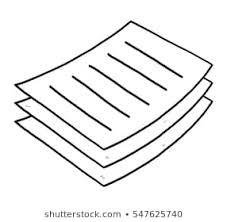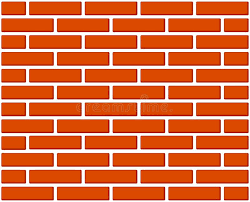Iron,Magnet and wall
(FEMA 2)

Understanding the problem statement
Chef placed some magical tokens in a row of N cells. For simplicity, the row is represented as a string S, each character of the string can be one of the following:





- Iron
- Magnet
- Empty cell
- Sheet
- Wall
T
_
M
_
:
X
Representation
S(i,j) denotes the number of cells containg sheets between index i and j.





- Iron
- Magnet
- Empty cell
- Sheet
- Wall
T
_
M
_
:
X
Representation
Understanding the problem statement
S(i,j) denotes the number of cells containg sheets between index i and j.





- Iron
- Magnet
- Empty cell
- Sheet
- Wall
T
_
M
_
:
X
Representation








Understanding the problem statement
S(i,j) denotes the number of cells containg sheets between index i and j.





- Iron
- Magnet
- Empty cell
- Sheet
- Wall
T
_
M
_
:
X
Representation








i
j
S(i,j) = 4
Understanding the problem statement
The attraction power of a magnet at position i on cell j is given by the following law:








i
j
For K = 10
P(i,j) = 10+1 - |6 -0 | - 3
P(i,j) = K + 1 - | j - i | - S(i,j)
Understanding the problem statement
The attraction power of a magnet at position i on cell j is given by the following law:








i
j
For K = 10
P(i,j) = 10+1 - |6 -0 | - 3
P(i,j) = 11 - 9
P(i,j) = 2
P(i,j) = K + 1 - | j - i | - S(i,j)
Understanding the problem statement
The attraction power of a magnet at position i on cell j is given by the following law:








i
j
For K = 10
P(i,j) = 10+1 - |6 -0 | - 3
P(i,j) = 11 - 9
P(i,j) = 2
P(i,j) = K + 1 - | j - i | - S(i,j)
P(i,j) > 0
The magnet can attract iron!!
Each magnet can attract
at most one and vice cersa..!!
Understanding the problem statement
The attraction power of a magnet at position i on cell j is given by the following law:








i
j
For K = 10
P(i,j) = 10+1 - |6 -0 | - 3
P(i,j) = 11 - 9
P(i,j) = 2
P(i,j) = K + 1 - | j - i | - S(i,j)
P(i,j) > 0
If there is a wall between
Iron and magnet than
attraction won't happen!!

Understanding the problem statement
The attraction power of a magnet at position i on cell j is given by the following law:








i
j
Chef can decide for each magnet and iron to attract.
TASK
Find the maximum number of irons that can be attracted by the magnets.
Understanding the problem statement
Understanding the sample test cases
2
4 5
I::M
9 10
MIM_XII:M
1
2
Sample Cases
Output




i
j
2
4 5
I::M
9 10
MIM_XII:M
1
2
Sample Cases
Output
Understanding the sample test cases




i
j
2
4 5
I::M
9 10
MIM_XII:M
1
2
P(i,j) = K + 1 - | j - i | - S(i,j)
Sample Cases
Output
Understanding the sample test cases




i
j
2
4 5
I::M
9 10
MIM_XII:M
1
2
P(i,j) = K + 1 - | j - i | - S(i,j)
5+1 - |3-0| - 2
= 1
0
3
2
1
Sample Cases
Output
Understanding the sample test cases




i
j
2
4 5
I::M
9 10
MIM_XII:M
1
2
P(i,j) = K + 1 - | j - i | - S(i,j)
5+1 - |3-0| - 2
= 1
0
3
2
1
P(i,j) > 0
Yes the only Iron is attracted by magnet.
Sample Cases
Output
Understanding the sample test cases



i
j
2
4 5
I::M
9 10
MIM_XII:M
1
2






Sample Cases
Output
Understanding the sample test cases



i
j
2
4 5
I::M
9 10
MIM_XII:M
1
2
P(i,j) = K + 1 - | j - i | - S(i,j)
10 + 1 - |1-0| - 0
10






0
8
7
6
5
4
3
2
1
Sample Cases
Output
Understanding the sample test cases



i
j
2
4 5
I::M
9 10
MIM_XII:M
1
2






0
8
7
6
5
4
3
2
1


Sample Cases
Output
Understanding the sample test cases



i
j
2
4 5
I::M
9 10
MIM_XII:M
1
2






0
8
7
6
5
4
3
2
1


The magnet cannot attract Iron because wall is present between them..!!
Sample Cases
Output
Understanding the sample test cases



i
j
2
4 5
I::M
9 10
MIM_XII:M
1
2
P(i,j) = K + 1 - | j - i | - S(i,j)
10 + 1 - |8-5| - 1
7






0
8
7
6
5
4
3
2
1


Sample Cases
Output
Understanding the sample test cases



i
j
2
4 5
I::M
9 10
MIM_XII:M
1
2
P(i,j) = K + 1 - | j - i | - S(i,j)
10 + 1 - |8-5| - 1
7






0
8
7
6
5
4
3
2
1


P(i,j) = K + 1 - | j - i | - S(i,j)
10 + 1 - |8-6| - 1
8


Sample Cases
Output
Understanding the sample test cases



i
j
2
4 5
I::M
9 10
MIM_XII:M
1
2






0
8
7
6
5
4
3
2
1




Two irons can be attracted at max!!


Sample Cases
Output
Understanding the sample test cases
Approach Formation
Observation 1 :
Each magnet has its attraction over each cell.
Approach Formation
Observation 1 :
Each magnet has its attraction over each cell.
A magnet at position ii has attraction of KK at positions i-1i−1 and i+1i+1, and after that it starts decreasing by one with distance, i.e the attraction power is K-1K−1 at positions i-2i−2 and i+2i+2, and K-2K−2 at positions i-3i−3 and i+3i+3 and so on.
Not taking sheets into consideration
Approach Formation
Observation 1 :
A magnet at position ii has an of KK at positions i-1i−1 and i+1i+1, and after that it starts decreasing by one with distance, i.e the attraction power is K-1K−1 at positions i-2i−2 and i+2i+2, and K-2K−2 at positions i-3i−3 and i+3i+3 and so on.
P(i,j) = K + 1 - | j - i | - S(i,j)
Approach Formation
Observation 1 :
A magnet at position ii has an of KK at positions i-1i−1 and i+1i+1, and after that it starts decreasing by one with distance, i.e the attraction power is K-1K−1 at positions i-2i−2 and i+2i+2, and K-2K−2 at positions i-3i−3 and i+3i+3 and so on.
P(i,j) = K + 1 - | j - i | - S(i,j)
K + 1 - |i+1-i|- 0
= K
For (i+1)

i


i+1
i-1
Approach Formation
Observation 1 :
A magnet at position ii has an of KK at positions i-1i−1 and i+1i+1, and after that it starts decreasing by one with distance, i.e the attraction power is K-1K−1 at positions i-2i−2 and i+2i+2, and K-2K−2 at positions i-3i−3 and i+3i+3 and so on.
P(i,j) = K + 1 - | j - i | - S(i,j)
K + 1 - |i-1-i|- 0
= K
For (i-1)

i


i+1
i-1
Approach Formation
Observation 1 :
A magnet at position ii has an of KK at positions i-1i−1 and i+1i+1, and after that it starts decreasing by one with distance, i.e the attraction power is K-1K−1 at positions i-2i−2 and i+2i+2, and K-2K−2 at positions i-3i−3 and i+3i+3 and so on.
P(i,j) = K + 1 - | j - i | - S(i,j)
K + 1 - |i+2-i|- 0
= K-1
For (i+2)

i


i+1
i-1


i+2
i-2
Approach Formation
Observation 1 :
A magnet at position ii has an of KK at positions i-1i−1 and i+1i+1, and after that it starts decreasing by one with distance, i.e the attraction power is K-1K−1 at positions i-2i−2 and i+2i+2, and K-2K−2 at positions i-3i−3 and i+3i+3 and so on.
P(i,j) = K + 1 - | j - i | - S(i,j)
K + 1 - |i-2-i|- 0
= K-1
For (i-2)

i


i+1
i-1


i+2
i-2
Approach Formation
Observation 1 :
P(i,j) = K + 1 - | j - i | - S(i,j)
K + 1 - |i+2-i|- 1
= K-2
For (i+2)

i


i+1
i-1


i+2
i-2
But what will happen when the sheets comes in between ?

i+3
Approach Formation
Observation 1 :
P(i,j) = K + 1 - | j - i | - S(i,j)
K + 1 - |i+2-i|- 1
= K-2
For (i+2)

i


i+1
i-1


i+2
i-2
But what will happen when the sheets comes in between ?

i+3
Approach Formation
Observation 1 :
P(i,j) = K + 1 - | j - i | - S(i,j)
K + 1 - |i+3-i|- 2
= K-4
For (i+3)

i


i+1
i-1


i+2
i-2
But what will happen when the sheets comes in between ?

i+3

Approach Formation
Observation 1 :
P(i,j) = K + 1 - | j - i | - S(i,j)
K + 1 - |i+4-i|- 2
= K-5
For (i+4)

i


i+1
i-1


i+2
i-2
But what will happen when the sheets comes in between ?

i+3


i+4
Approach Formation
Observation 1 :
P(i,j) = K + 1 - | j - i | - S(i,j)
K + 1 - |i+4-i|- 0
= K-3
For (i+4)

i

i+1
i-1


i+2
i-2
But what will happen when the sheets comes in between ?
i+3

i+4



Approach Formation
Observation 1 :
P(i,j) = K + 1 - | j - i | - S(i,j)
K + 1 - |i+6-i|- 0
= K-5
For (i+6)

i

i+1
i-1


i+2
i-2
But what will happen when the sheets comes in between ?
i+3
i+4




i+5
i+6


Approach Formation
Observation 1 :
P(i,j) = K + 1 - | j - i | - S(i,j)
K + 1 - |i+6-i|- 0
= K-5
For (i+6)
What we did?
Whenever we encounter sheet we will just increase the extra space..!! And remove S(i,j) from the formula!!

i

i+1
i-1


i+2
i-2
i+3
i+4




i+5
i+6


Approach Formation

i

i+1
i-1


i+2
i-2
i+3

i+4





i+5
i+6
Observation 2:
Whenever we encounter a wall we cannot take a magnet and the iron from the two different sides.


Approach Formation

i

i+1
i-1


i+2
i-2
i+3

i+4





i+5
i+6
Observation 2:
Whenever we encounter a wall we cannot take a magnet and the iron from the two different sides.



Approach Formation

i

i+1
i-1


i+2
i-2
i+3

i+4





i+5
i+6
Observation 2:
Whenever we encounter a wall we cannot take a magnet and the iron from the two different sides.



Approach Formation

i

i+1
i-1


i+2
i-2
i+3

i+4





i+5
i+6
Observation 2:
Whenever we encounter a wall we cannot take a magnet and the iron from the two different sides.



Approach Formation

i

i+1
i-1


i+2
i-2
i+3

i+4





i+5
i+6
Observation 2:
Whenever we encounter a wall we cannot take a magnet and the iron from the two different sides.



Approach Formation

i

i+1
i-1


i-2
i+3

i+4





i+5
i+6
Observation 2:
Solve the two parts seperately and find how many irons are attracted by magnets in the seprate groups..!!

Approach Formation





Observation 3:
See how many iron magnet pair we can form affectively..!!!





Approach Formation





Observation 3:
See how many iron magnet pair we can form affectively..!!!




K
K-1
K-2
0
1
K - elemnets
i

........
Approach Formation
Observation 3:
See how many iron magnet pair we can form affectively..!!!
j-i < K









K
K-1
K-2
0
1
K - elemnets
i

........
Approach Formation
Observation 3:
Iron at position k-1 is attracted by magnet at position k.
j-i < K









K
K-1
K-2
0
1
K - elemnets
i

........
Approach Formation
Observation 3:
Hence we will form Iron-magnet pair.
j-i < K









K
K-1
K-2
0
1
K - elemnets
i

........


Approach Formation
Observation 3:
We will select the magnet which is at maximum distance in the range.
j-i < K









K
K-1
K-2
0
1
K - elemnets
i

........


Approach Formation
Observation 3:
We need to take the postion of magnet and see how many irons lie in the attraction range of the magnet.









0
1
8
7
6
5
4
3
2
Approach Formation
Observation 3:
We need to take the postion of magnet and see how many irons lie in the attraction range of the magnet.









0
1
8
7
6
5
4
3
2
Approach Formation
Observation 3:
We need to take the postion of magnet and see how many irons lie in the attraction range of the magnet.









| 0 | 2 |
|---|
| 4 |
|---|
0
1
8
7
6
5
4
3
2


Approach Formation
Observation 3:
We need to take the postion of magnet and see how many irons lie in the attraction range of the magnet.









| 0 | 2 |
|---|
| 4 |
|---|


0
1
8
7
6
5
4
3
2
Approach Formation
Observation 3:
In the attraction range we will select the magnet which is at maximum distance to form the pair.









| 2 |
|---|
| 4 |
|---|


0
1
8
7
6
5
4
3
2
Approach Formation
Observation 3:
In the attraction range we will select the magnet which is at maximum distance to form the pair.









| 2 |
|---|


0
1
8
7
6
5
4
3
2


Approach Formation
Observation 3:
A replica situation can be done for Iron as well..!!


| 2 | 3 |
|---|
| 0 |
|---|


0
1
3
2
Check if iron can be attracted to a magenet or not!!


Approach Formation
Observation 3:
A replica situation can be done for Iron as well..!!


| 3 |
|---|


0
1
3
2
Check if iron can be attracted to a magenet or not!!



FEMA 2
By Chirayu Jain
FEMA 2
- 52



